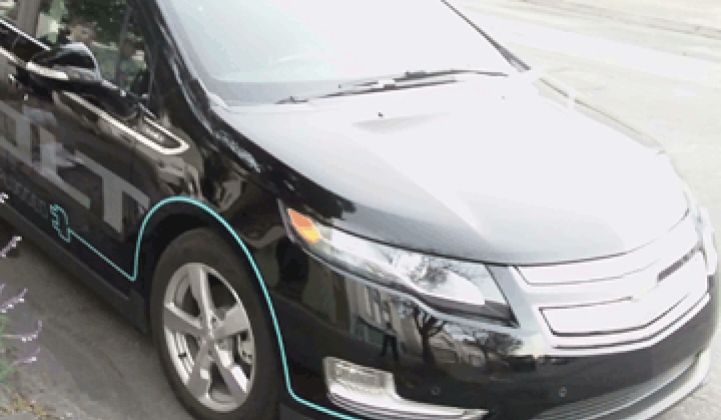The first few months of widespread availability of electric vehicles are generally being painted as a rosy picture. Early adopters are lining up for Volts and Leafs, while charging stations are popping up all over -- including places where they seemingly won’t be needed for months, if not years.
At the Bloomberg New Energy Finance Summit in New York City, two carmakers tooted their own horns when it came to the results so far -- and then contemplated how to sustain the momentum towards serious market penetration.
Tony Posawatz, Vehicle Line Director for the Chevrolet Volt, said that early sampling has found that Volt drivers go an average of 1,000 miles before they have to refuel. The company is on track to sell 50,000 cars in 2011. But where to go from there? Posawatz had these thoughts:
- The focus has to be on home charging. Studies have found that most charging happens at home, with the workplace coming in second, so GM is focused on making sure that charging at home is fully supported by the company.
- Although there are new players in the EV market, “carmakers will always want to stay close to our customers,” he said. Although he sees other third-party companies coming in, the relationship with the car will still be primarily with the carmaker.
- “The early adopters aren’t in West Virginia,” he said. Outside of early adopters in places like California, car companies need to make a play to drive down the cost of components. “We need a business model that sustains itself.” He anticipated that by the middle of this decade, they could take half of the battery cost out of the price tag of the car. “There are a lot of interesting synergies to drive this.”
The issue of bringing down cost was also front and center for Andy Palmer, Senior Vice President of Nissan. He said the company had produced 10,000 Leafs as of March, and more importantly, it’s sold every car that’s been built. “The question is, as we ramp up the factories in the U.K. and the U.S.," he said, “how can we get the pragmatists to adopt?”
- One way to get wider uptake of EVs is to talk pragmatism (although car buying and pragmatism do not always go hand in hand). He noted that one-third of European customers never drive more than 100 miles a day. “If everyone bought rationally, then there’s a huge customer base.”
- Palmer noted that the distribution of chargers today was more about reducing range anxiety than actually answering a need. Right now, no one knows if destination charging will really be used.
- Although the Leaf looks a lot like other cars on the market, the electric vehicle could upend car design in the future. “The engine can be anywhere, so that will allow us to innovate,” he said.
- Palmer was equally bullish on the carmaker continuing the relationship with the driver, but acknowledged that auto companies are engaging in new relationships -- with utilities, for example -- that they never have before. He even anticipated that cars could be sold differently in the future.
- The electric vehicle will get the ball rolling on clean energy. As people start to plug in and think about what’s charging the car, he thinks it will put pressure on governments for cleaner energy. However, all the years of petroleum have not led the public to clamor for an alternative source of gas. But even if EVs don’t spur a love of renewables, bringing the cars onto the grid at scale will require upgrades to the grid that could also help integrate renewables.
- By 2020, Palmer estimated that 10 percent of the Nissan fleet will be electric. He also mentioned fuel cell vehicles, which were also mentioned by NREL’s Arvizu during the conference -- so don’t count out the fuel cell yet.



